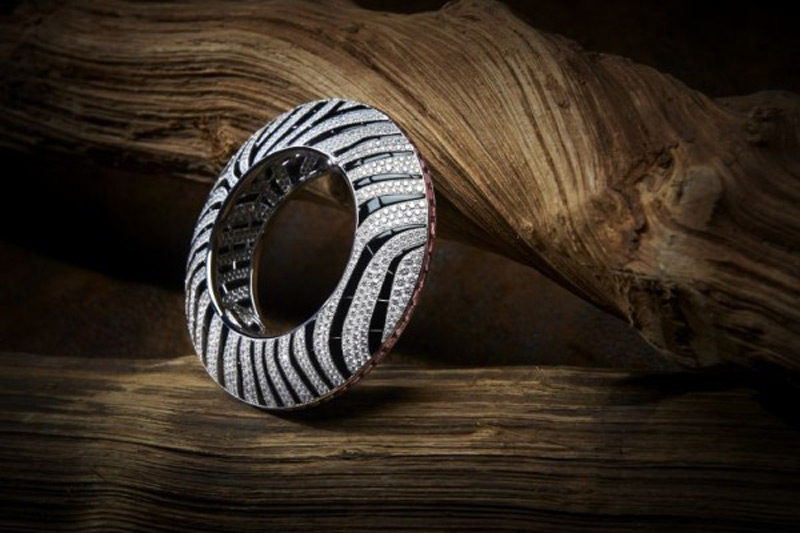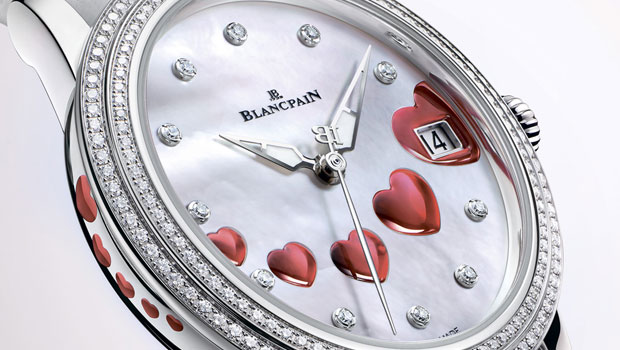Gemfields and Fabergé are delighted to unveil what is believed to be the world’s first emerald, laser-inscribed with traceability information and a personalised message.
The 4.11 carat, lively green emerald-cut gemstone was mined at Gemfields’ Kagem emerald mine in Zambia. The gem was then acquired and mounted by Fabergé as a custom-crafted item for the successful winner of a charity auction held by the charity mothers2mothers at Salma Hayek Pinault’s London home in November.
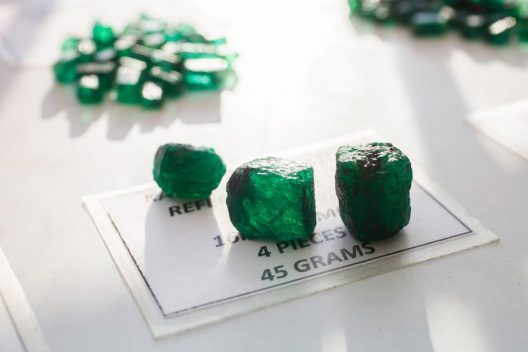
Gemfields and Fabergé Emerald
As part of the prize, the winners will also travel to Gemfields’ Kagem mine in Zambia to see for themselves the very source of their unique emerald, as well as the mine’s community projects in place in the area. The winners will also have the opportunity to visit the local mothers2mothers initiatives.
The girdle of the emerald is laser-engraved with: a secret message chosen by the winner; the reference number of the gemstone’s Gübelin laboratory certificate and a Gemfields reference number.
Magnification of approximately [20x] is required to read the information. The laser-inscription process has no effect on the colour, clarity or other characteristics of the gem.
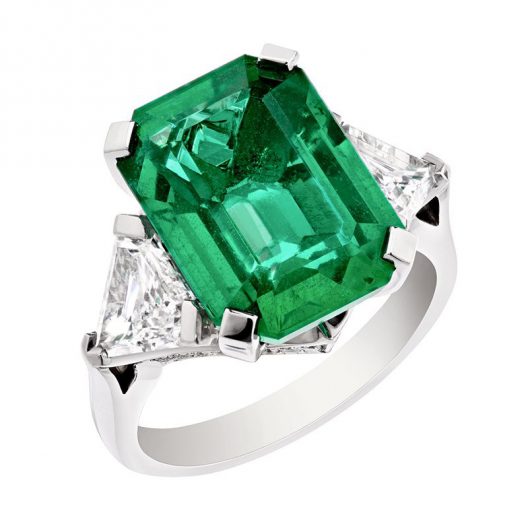
Gemfields and Fabergé Emerald
Sean Gilbertson, CEO of Gemfields said “Gemfields is thrilled to unveil another exciting advance, simultaneously supporting both the traceability and the romance of precious coloured gemstones. Gemfields’ belief that there is ‘A story in every gemstone’ is taken to a new level by laser-engraving a personalised message on a gem. We wish to thank the dynamic team at the AnchorCert Gem Lab for their assistance with this project.”
In line with its industry leading approach to transparency, Gemfields has previously announced innovations in improving gemstone traceability.
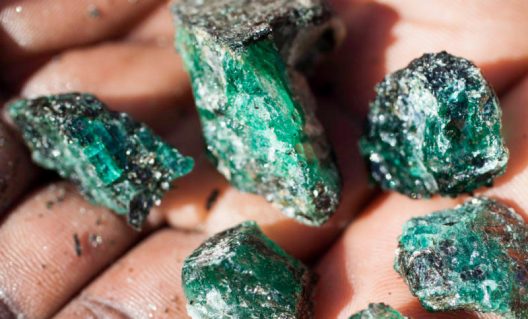
Gemfields and Fabergé Emerald
In 2015, Gemfields announced together with Gübelin that Gübelin gemstone certificates could, at the request of Gübelin’s clients, disclose on the certificate the identity of the party presenting the gemstone to Gübelin for analysis. In 2017, Gemfields and Gübelin unveiled a ‘paternity testing’ mechanism whereby un-cut gemstones could be tagged at source with specially encoded nano-particles which would survive cutting, polishing and treatment processes, allowing the mine-of-origin of the gemstone to be determined years or decades later.
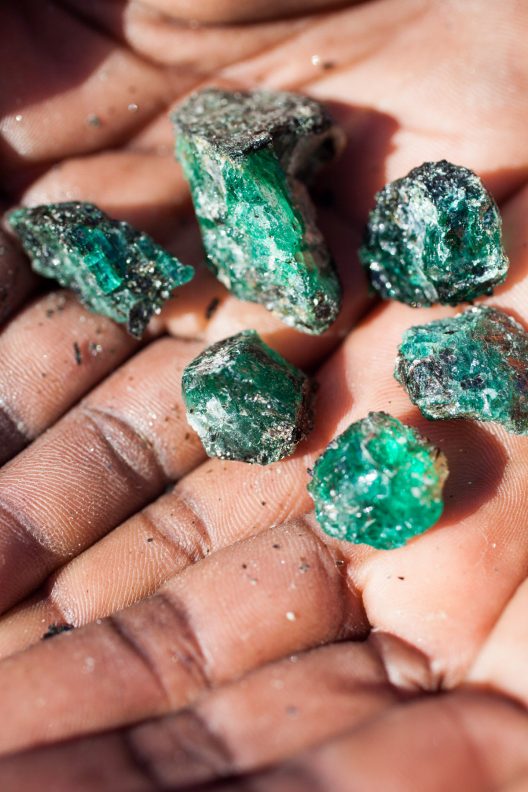
Gemfields and Fabergé Emerald






